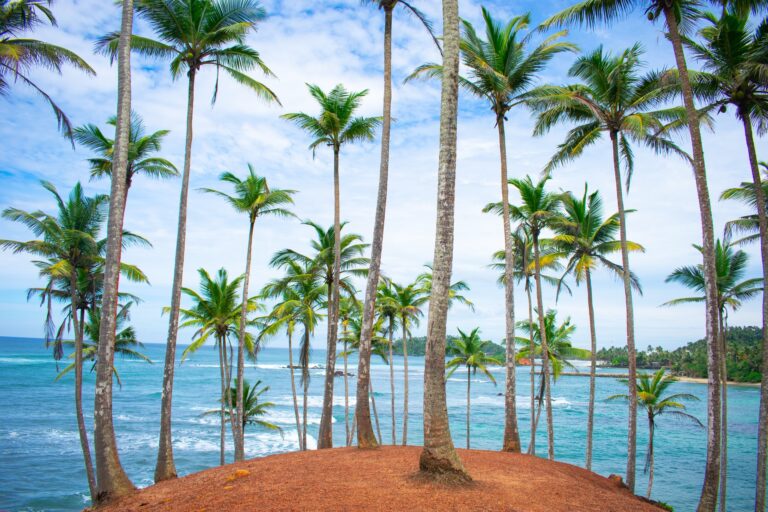Sri Lanka
Known rather romantically as the Teardrop Island, Sri Lanka is truly a jewel of the Indian Ocean. This lush little dot, lying a few degrees north of the equator and a mere stone’s throw from India, is bordered by unspoilt white sand beaches and packed with UNESCO World Heritage Sites. Sri Lanka holidays give you the chance to explore rolling tea plantations, ancient temples, dramatic mountain landscapes, national parks teeming with wildlife, and pretty colonial cities.
Sinhala and Tamil
December - March
Colombo
Rupee
GMT+5.5
22 - 31°C
Hike across Horton Plains
Rice & Curry
OUR FAVOURITE SUSTAINABLE STAY
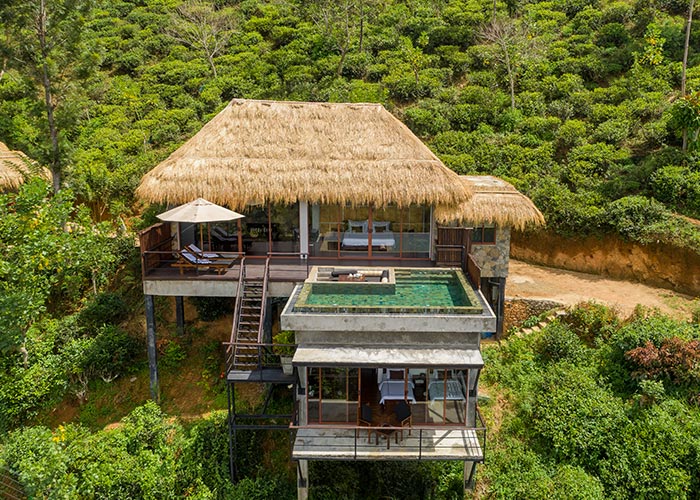
Experience the beauty and serenity of Sri Lanka’s luxury boutique hotel 98 Acres Resort and Spa within ninety-eight acres of scenic tea estate land in fascinating Ella, Bandarawela, Sri Lanka. The 98 Acres Resort and Spa was built on a tea plantation which is still running, so you can learn all about tea production or enjoy relaxing in the amazing hotel facilities. The hotel also offers many activities such as nature walks in the exquisite countryside, safari to a local wildlife sanctuary, visits to local temples and much more.
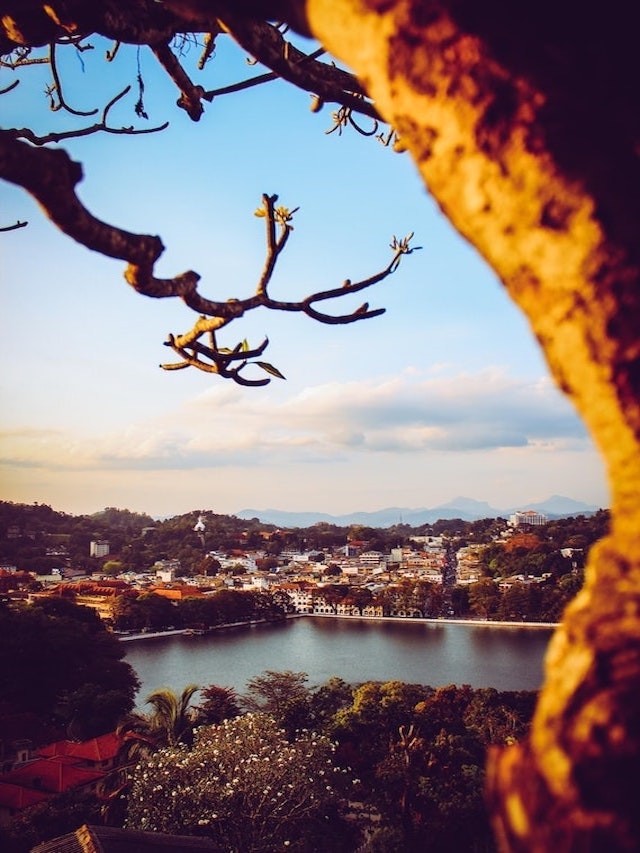
No trip to Sri Lanka could be complete without a visit to the sacred city of Kandy, the last capital of the Sinhala kingdom, located on a central plateau surrounded by mountains. A UNESCO-listed World Heritage Site, Kandy is the sacred setting of the Temple of the Tooth Relic, a famous pilgrimage site said to be home to the tooth of Buddha. In summer, a popular time to visit is the Esala Perahera festival, a ten-day celebration honouring the tooth relic and the gods. The spectacular procession includes jugglers, dancers, musicians, fire-breathers and decorated elephants. If time allows, the nearby World Buddhist Museum and the colourful Royal Botanical Gardens in Peradeniya are well worth dropping by.
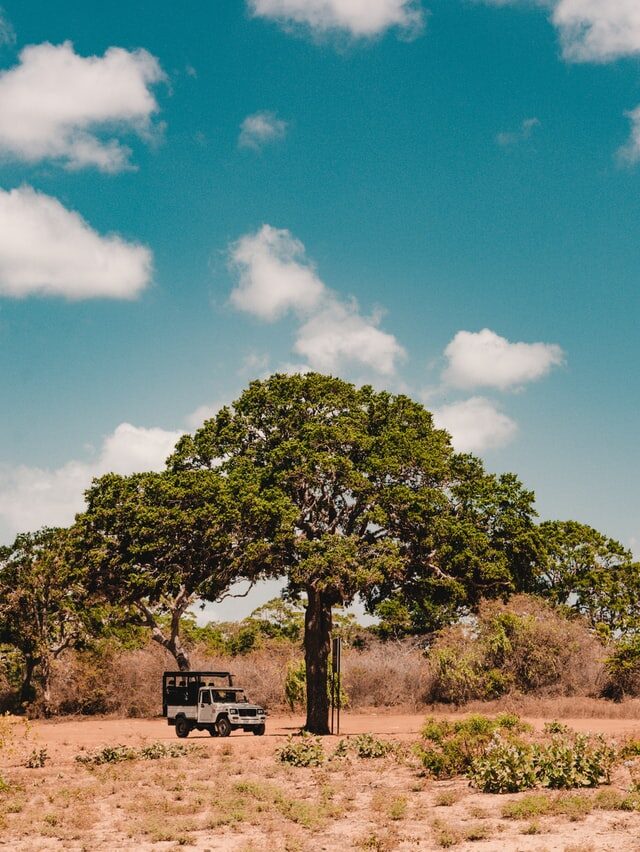
If you love big cats, Yala National Park is the place to go since it has the highest density of leopards in the world. Located on the southeast coast, Yala National Park provides diverse habitats for various creatures, from moist monsoon forests to freshwater and marine wetlands, grasslands and sandy beaches. On safari, you may see wild elephants, hundreds of bird species (including six which are endemic to Sri Lanka), as well as monkeys, Sri Lankan sloth bears, wild water buffalo, lizards, turtles and crocodiles.
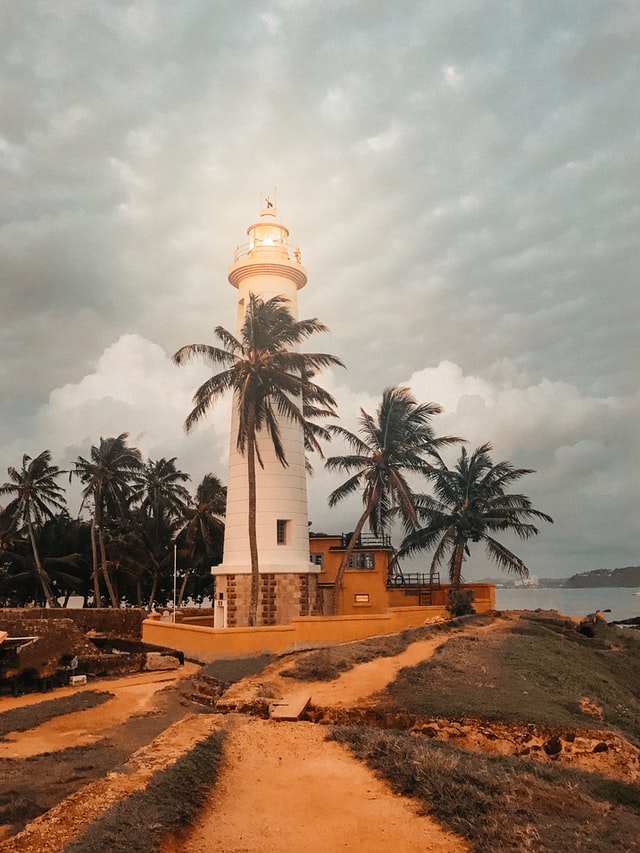
Home of the World Heritage Site of Galle Fort, Galle is a perfectly preserved walled colonial town built by the Portuguese and fortified by the Dutch. Wander its brooding stone battlements overlooking sedate streets with Dutch-era villas and courtyards. Visit Galle to take in the lighthouse, clock tower, Groote Kerk, All Saints' Church, National Museum, Old Dutch Hospital and National Maritime Museum. With a beautiful blend of South Asian and European architectural styles, the ancient city of Galle is rightly considered one of the modern wonders of the world.
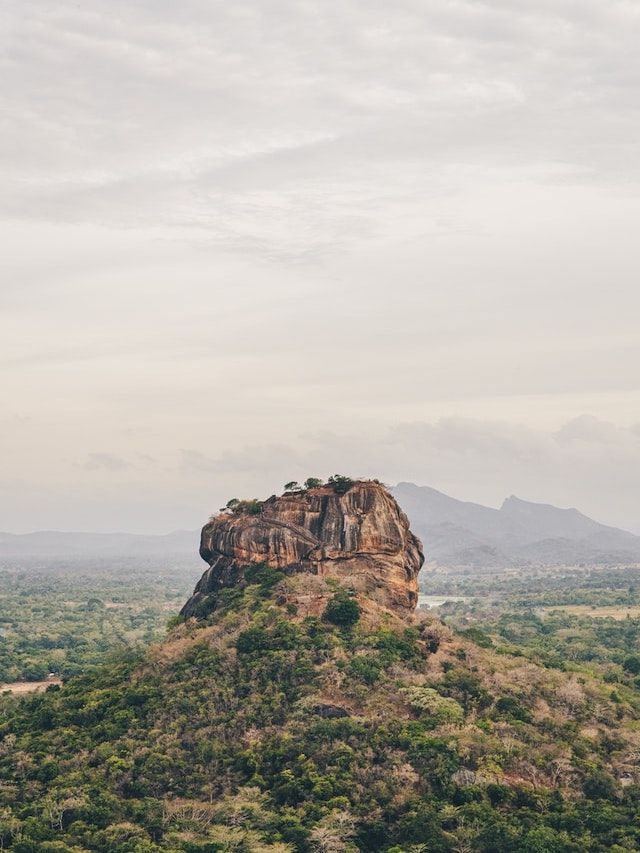
Sigiriya, or Lion Rock, is a massive column of rock topped by the ruins of the palace of an ancient king and offers panoramic views across the rolling jungle landscape. The 180m high rock looks a daunting height, but it's a relatively gentle climb upstairs to explore the ancient remains of one of Sri Lanka's former capital cities. Along the way, you pass carved galleries and colourful wall paintings over 1,600 years old, with views of beautiful water gardens. How often can you say you've climbed a massive lava rock from a long-extinct volcano to check out an ancient fortress?

Comprising of five mystical cave temples with vibrant paintings depicting facets of the Buddhist faith, the Golden Temple of Dambulla is a historical and cultural treasure. This most extensive and best-preserved of all Sri Lanka's cave temples was founded in the 1st century BC and still contains a fascinating array of statues of Sri Lankan kings, gods and goddesses, and shrines. Colourful Buddhist murals tell the story of Buddha's life and cover a massive 2,100 square metres of wall space in the complex.
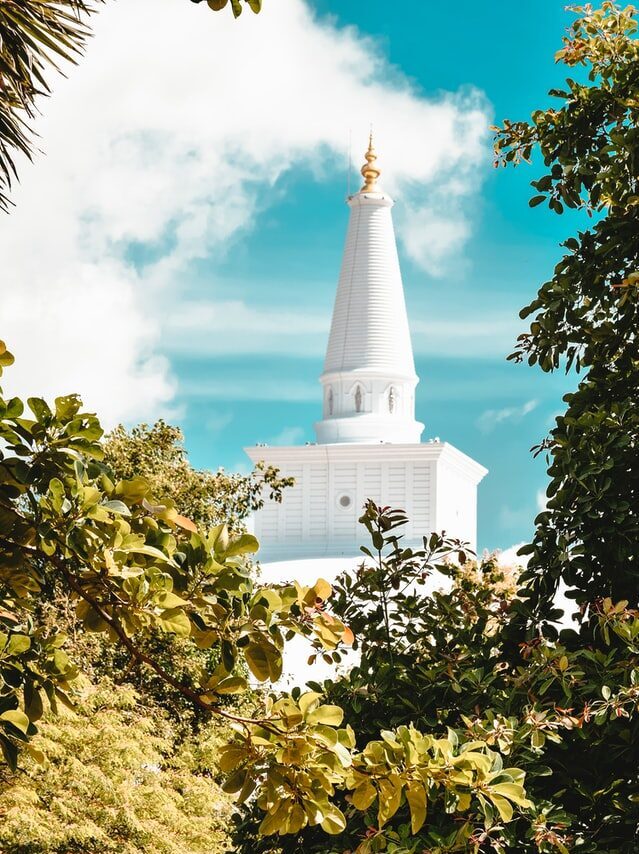
The first ancient capital of Sri Lanka, Anuradhapura, flourished from the 5th century BC to the 10th century, making up part of Sri Lanka's 'cultural triangle. Despite being home to one of South Asia's first great civilisations, it was invaded and abandoned in 993, lying overgrown and forgotten in the jungle until the 19th century. This sacred city has at its heart the Bo tree, Buddha's fig 'tree of enlightenment, believed to have been brought to Sri Lanka in the 3rd century BC, making it the oldest living tree in recorded history.
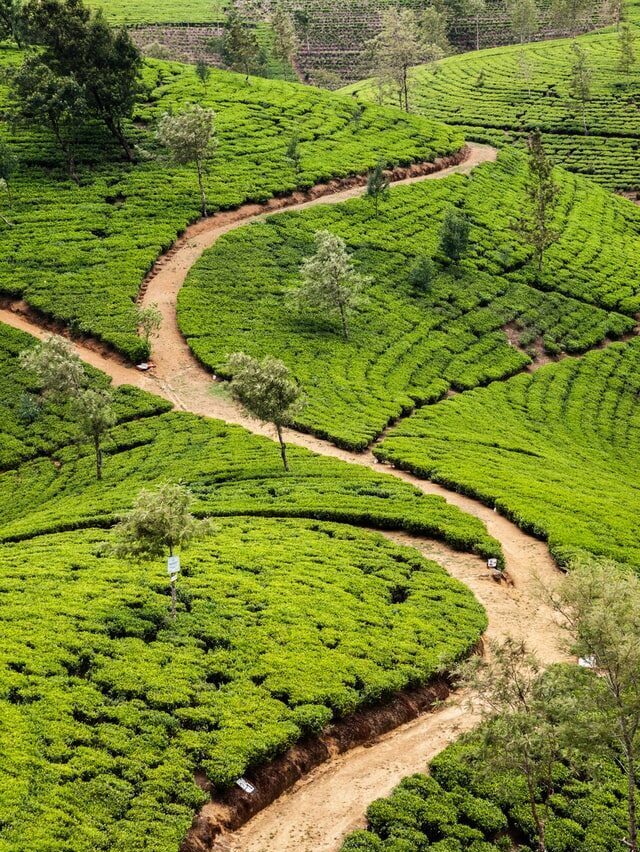
Known as 'Little England' for its cool climate, charming colonial buildings and olde worlde atmosphere, Nuwara Eliya was once a playground for British civil servants and pioneering tea planters. After visiting the quaint Queen's Cottage, General's House and various English-style lawns and gardens, take a moment to enjoy a cup of Ceylon tea somewhere with picturesque views of the hill country. Walks to waterfalls, adventure sports and hiking excursions are available nearby.
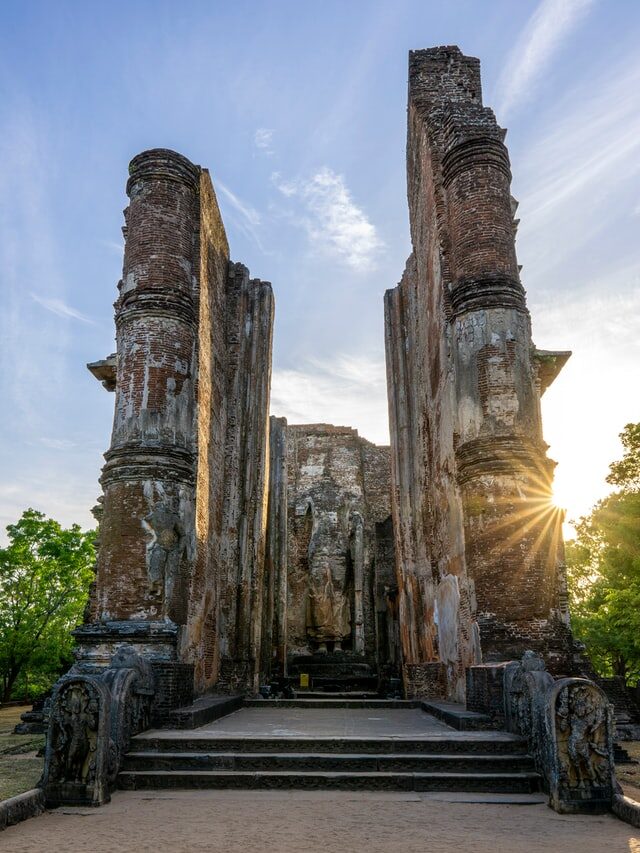
The second most ancient capital of Sri Lanka after the destruction of Anuradhapura, the ruin of Polonnaruwa city dates from between the 9th to the 14th century. This World Heritage-listed archaeological park holds an impressive array of well-preserved temples, tombs, statues, and stupas to explore and reveals a fascinating insight into island life. Toque macaque monkeys roam freely around the ruins making mischief, as they have done since humans first inhabited the site.
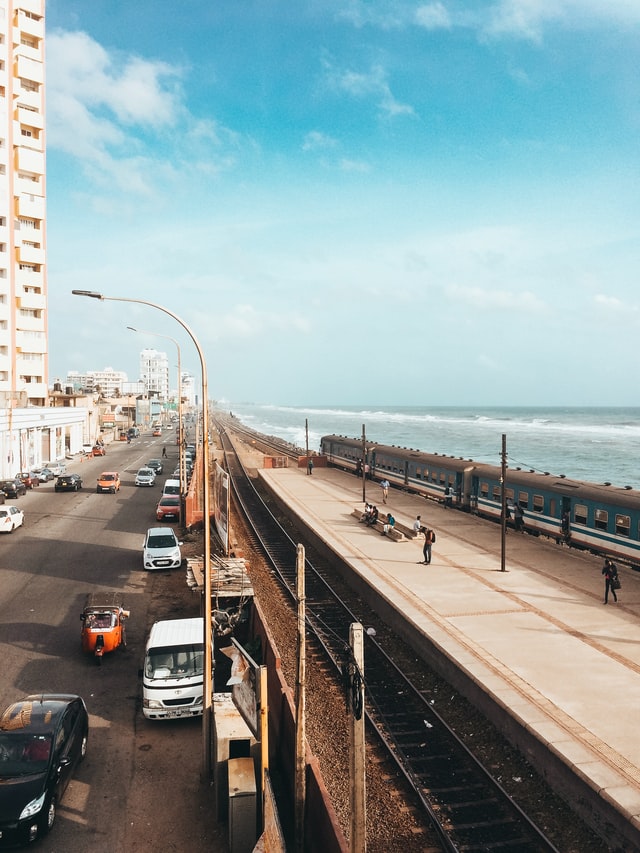
The nation's capital city attracts mixed reviews. Still, although it doesn't have the instant allure of some of the world's more famous capitals, it's a vibrant, ancient maritime city with boulevards, colonial architecture and old fort ramparts. Don't miss the famous Pettah bazaar district with its buzzing, chaotic commerce of household goods, towering stacks of fruit and tacky toys, as well as a wide selection of restaurants, galleries and museums. Other famous landmarks in Colombo include the oceanside park and promenade of Galle Face Green, Viharamahadevi Park, Colombo Lotus Tower and the Sri Lanka National Museum.
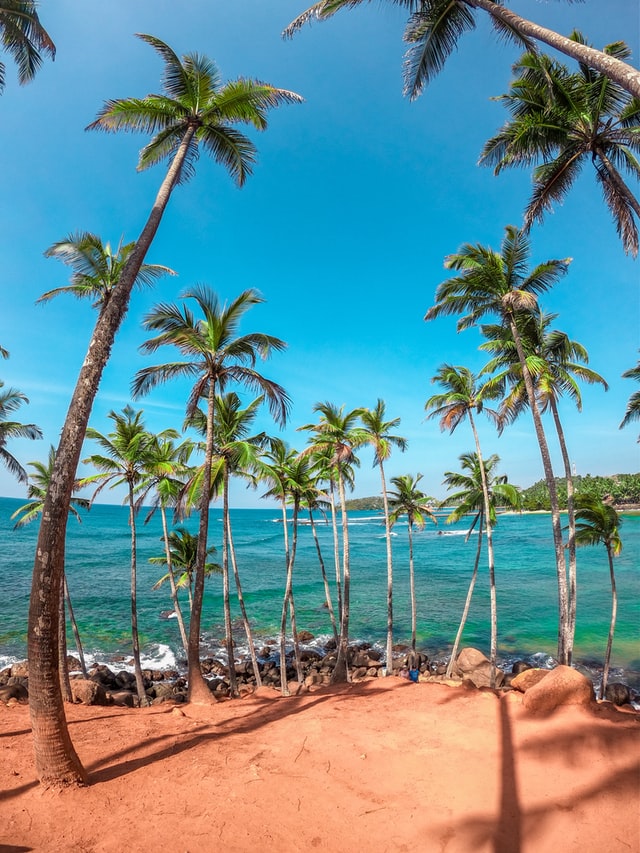
World-renowned for whale and dolphin watching, don't miss the chance to take a boat cruise on the clear turquoise sea near Mirissa to see the gentle giants of the ocean. A variety of species, including sperm whales, blue whales, Bryde's whales, fin whales, migrate through the fertile waters south of Sri Lanka from December to April. Bottlenose, common and spinner dolphins can be seen leaping the waves at various times of the year. The area is also increasingly popular for snorkelers and scuba divers. Once back on dry land, choose a relaxing spot to soak in picture-postcard views of white sands and coconut palms, then head back into Mirissa village to enjoy its busy night scene.


